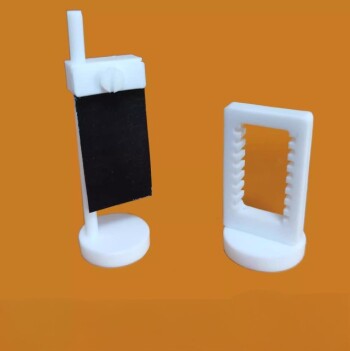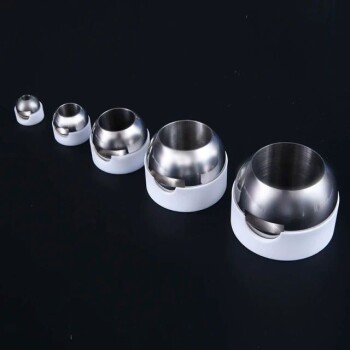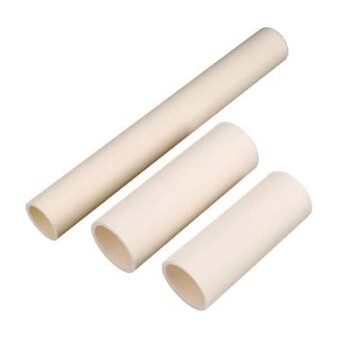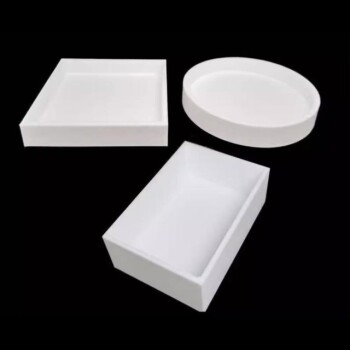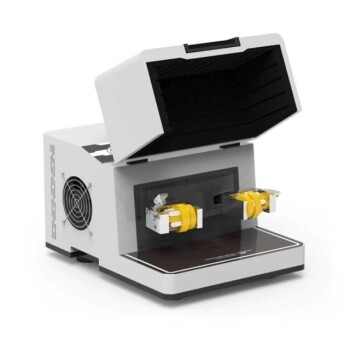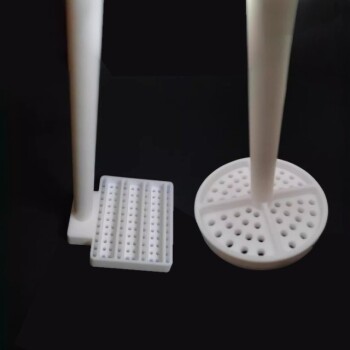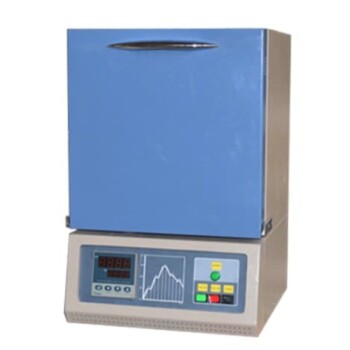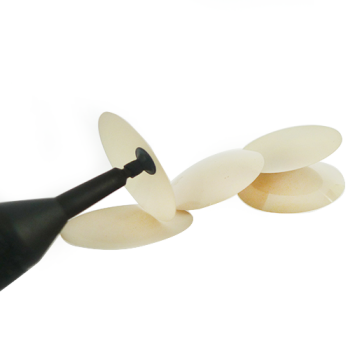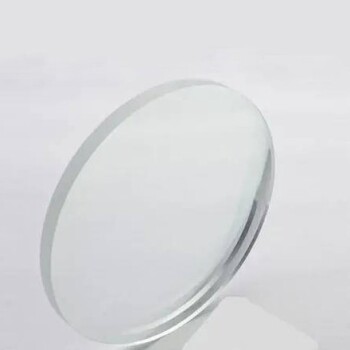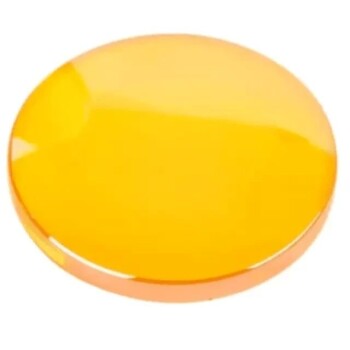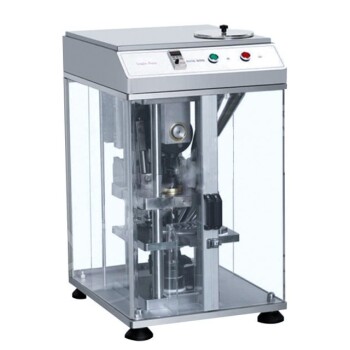精密陶瓷简介
重要性和应用
精密陶瓷元件因其卓越的机械性能和在极端条件下的弹性,在各种尖端技术中发挥着举足轻重的作用。在 集成电路制造领域 在集成电路制造领域,这些元件对于保持半导体器件所需的高精度和高可靠性是不可或缺的。它们的高强度和高硬度确保其能够承受制造过程中的严格要求而不影响性能。
在 激光技术 在激光技术中,精密陶瓷能够在高能激光照射下保持结构的完整性。精密陶瓷的抗热震性和光学清晰度使其非常适合医疗激光和工业切割工具等对激光束的精确操作要求极高的应用领域。
传感领域 传感领域 精密陶瓷的高灵敏度和稳定性使传感领域受益匪浅。这些元件通常用于需要精确可靠数据收集的传感器中,如环境监测系统和工业自动化中的传感器。即使在恶劣的环境中,它们的耐用性也能确保长期性能。
超导技术 超导技术利用精密陶瓷的独特性能实现高温超导。这些材料对于开发超导磁体和其他需要低电阻和高电流密度的元件至关重要。它们能够在比传统超导体更高的温度下工作,为节能技术开辟了新的可能性。
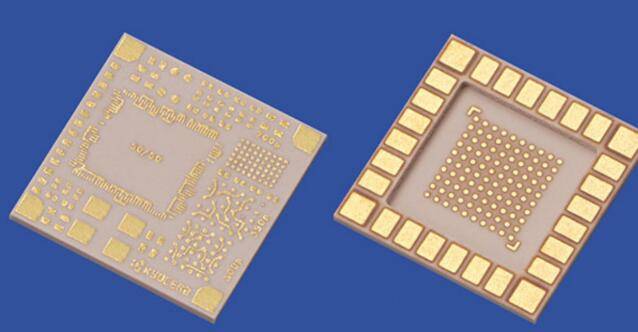
在 生物医学应用中 精密陶瓷因其生物相容性和机械强度而备受推崇。它们被用于需要与人体完美结合的植入物和假肢。它们的耐腐蚀性和耐磨损性确保了这些医疗设备能够长期有效,改善患者的治疗效果,减少频繁更换的需要。
总之,精密陶瓷元件的多功能性和坚固性使其在多个技术领域都不可或缺,推动了创新并提高了关键系统的性能。
挑战与局限
精密陶瓷虽然具有高强度和耐极端环境等众多优点,但也面临着重大挑战,使其生产和使用变得更加复杂。其中一个主要问题是陶瓷本身的高硬度和脆性,这使其难以加工。这一特性不仅增加了制造工艺的复杂性,而且使材料在机械应力作用下更容易出现裂纹和断裂。
精密陶瓷的脆性要求使用专门的加工技术,而这些技术往往需要较高的运营成本。例如,由于材料的抗变形性,传统切削方法的效果较差,导致切削工具磨损加剧,能耗增加。此外,加工过程中形成微裂纹的风险会降低最终产品的整体质量和性能,进一步增加生产成本。
此外,这些陶瓷的高硬度会限制其在某些需要灵活性和易成型的应用场合的适用性。在将精密陶瓷元件集成到需要对动态条件具有适应性和弹性的系统中时,这种刚性也会带来挑战。
总之,虽然精密陶瓷的性能属性非常理想,但其高硬度和脆性也会给制造带来巨大障碍,包括成本增加和产品缺陷的可能性。应对这些挑战需要创新的加工技术和谨慎的材料选择,以优化性能和可制造性之间的平衡。
精密陶瓷的制备技术
注塑成型
陶瓷注塑成型 (CIM) 是一种将传统聚合物注塑技术与先进陶瓷制备方法相结合的复杂工艺。这种创新方法可以制造出复杂的小尺寸陶瓷部件,具有极高的尺寸精度和均匀的密度。该工艺首先将精细陶瓷粉末与聚合物粘合剂混合,然后在高压下注入模具。部件成型后,通过脱粘工艺去除粘合剂,然后进行烧结,以获得最终的陶瓷结构。
CIM 的主要优势之一是能够生产复杂的几何形状,而传统的陶瓷成型方法很难或根本无法实现这些几何形状。这种能力在航空航天、医疗设备和电子等行业尤为重要,因为这些行业对高性能、精密工程部件的要求极高。通过 CIM 实现的均匀密度可确保整个部件具有一致的机械性能,这对于要求可靠性和耐用性的应用来说至关重要。
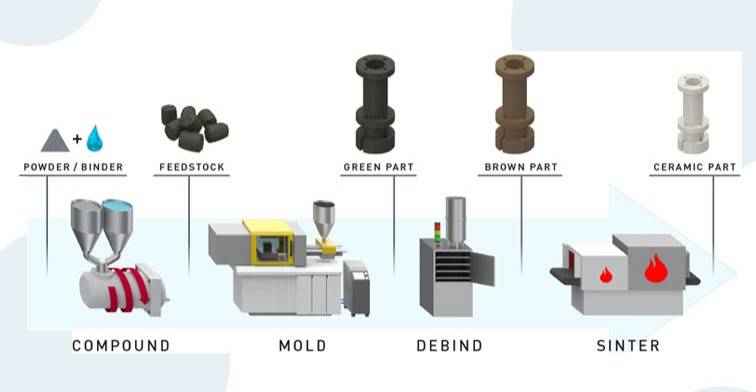
此外,与传统陶瓷制造方法相比,CIM 还能显著节约成本并提高效率。通过生产接近净成形的部件,CIM 减少了对大量后处理的需求,从而减少了材料浪费和生产时间。注塑成型工艺的自动化能力进一步提高了这种效率,从而保证了质量的一致性并降低了劳动力成本。
总之,陶瓷注塑成型是一项尖端技术,它在聚合物加工和陶瓷工程之间架起了一座桥梁,为生产具有卓越性能特点的高精度陶瓷元件提供了一种多功能解决方案。
注胶成型
注射凝胶成型技术是陶瓷制造领域的一大进步,它将传统的陶瓷成型技术与先进的有机聚合方法完美地结合在一起。这种创新工艺在生产接近净尺寸的高强度陶瓷坯料方面尤其具有优势,而这种坯料对于制造复杂的大型陶瓷元件至关重要。传统方法往往需要大量的后处理才能达到理想的形状和强度,而注射凝胶成型法则不同,它能显著缩短成型周期,从而提高生产效率。
该工艺充分利用了陶瓷和聚合物材料的优势,可以制造出以前传统方法难以实现的复杂几何形状。通过结合这些技术,制造商可以生产出密度均匀、机械性能优异的陶瓷元件,使其成为要求高精度和耐用性的应用的理想选择。这种方法不仅简化了生产流程,还最大限度地减少了材料浪费,有助于创造更可持续的生产环境。
总之,注射凝胶成型是一种尖端技术,它解决了传统陶瓷成型的局限性,为生产形状复杂、成型周期短的高性能陶瓷部件提供了一种多功能解决方案。
三维打印成型
三维打印技术以前所未有的速度和效率制造出高度复杂的部件,从而彻底改变了精密陶瓷的制造工艺。与传统成型方法不同,3D 打印集成了先进的计算机辅助设计(CAD)和制造工艺,无需模具即可实现材料的逐层沉积。这种方法尤其适用于生产复杂的陶瓷组件,而使用传统技术则很难或根本无法制造这种组件。
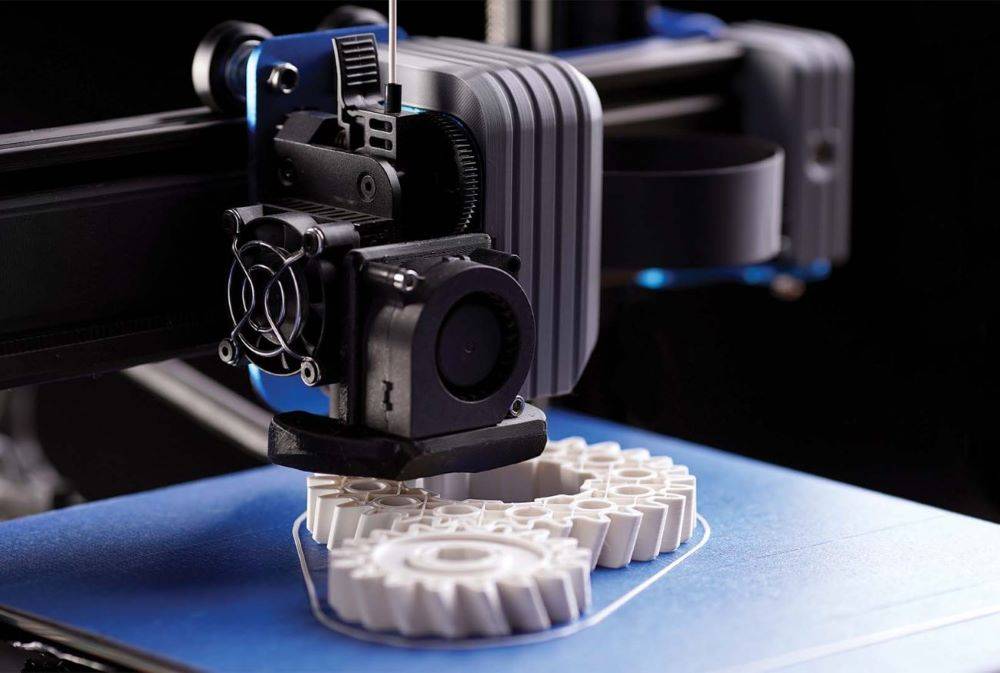
3D 打印的灵活性扩展到各种陶瓷材料,每种材料都具有独特的性能,可用于特定应用。例如,氧化锆、氧化铝和氮化硅因其高强度和对极端条件的耐受性而常用于 3D 打印。将这些材料打印成复杂几何形状的能力可确保最终产品符合精确的尺寸要求和性能标准。
此外,三维打印还大大缩短了制造所需的时间,因为它省去了多个工具设置和中间步骤。这种简化的流程不仅加快了生产速度,还最大限度地减少了浪费,使其成为一种环保选择。下表重点介绍了 3D 打印在陶瓷制造中的主要优势:
| 优势 | 优势 |
|---|---|
| 高复杂性 | 能够制造模具难以实现的复杂几何形状。 |
| 缩短制造时间 | 无需多次模具设置和中间步骤。 |
| 材料灵活性 | 支持各种具有独特性能的陶瓷材料。 |
| 减少浪费 | 简化流程,减少材料浪费,提高效率。 |
总之,3D 打印是精密陶瓷领域的一项变革性技术,在复杂性、速度和材料多样性方面具有无与伦比的能力。它与制造工艺的整合为各行各业提供了创新解决方案和更高的性能。
精密陶瓷的加工技术
化学机械抛光 (CMP)
化学机械抛光 (CMP) 是半导体行业的一项关键工艺,主要用于实现整体平面化。该技术使用纳米级研磨颗粒,在高温高压条件下产生一种新的更柔软的物质。这种较软的物质便于去除,并能产生超光滑的表面,这对半导体器件的精确制造至关重要。
CMP 工艺非常复杂,涉及化学和机械力的复杂相互作用。研磨颗粒通常由二氧化硅或氧化铝等材料组成,悬浮在含有化学药剂的浆液中。这些药剂会与被抛光材料的表面发生反应,形成一层薄层,更容易受到机械磨损。化学反应和机械磨损的结合可确保材料被均匀去除,从而获得平整的表面。
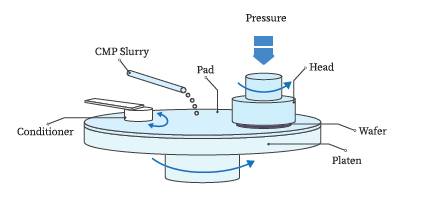
CMP 的主要优势之一是能够实现整体平面化,这对制造多层半导体器件至关重要。如果没有平面化,表面的不规则性可能会导致后续层出现缺陷,从而影响设备的整体性能和可靠性。CMP 生产超光滑表面的能力也降低了出现缺陷的可能性,从而提高了半导体元件的产量和质量。
除了用于半导体制造,CMP 还应用于精密陶瓷元件的生产。这种技术对硬脆材料特别有用,因为它可以精确地去除材料,而不会对底层结构造成严重破坏。这使得 CMP 成为制造航空航天、汽车和医疗设备等各行各业所用高性能陶瓷元件的宝贵工具。
然而,CMP 工艺并非没有挑战。所需的高温和高压会导致设备磨损,增加维护成本。此外,还必须仔细优化研磨颗粒和浆料中化学制剂的选择,以确保在不对材料造成不必要损害的情况下进行有效抛光。尽管存在这些挑战,但 CMP 在实现高质量、超光滑表面方面的优势使其成为精密陶瓷领域不可或缺的技术。
磁流变抛光
磁流变抛光(MRP)是精密陶瓷领域的尖端方法,具有无与伦比的精度和效率。与传统抛光技术不同,MRP 利用磁流变液体--一种在磁场影响下改变流变特性的智能材料。这种独特的特性可以实时调整抛光过程,确保高精度和一致性。
MRP 最显著的优点之一是没有工具磨损。传统的抛光方法经常会出现工具退化的问题,从而导致表面光洁度不一致,需要频繁更换工具。相比之下,MRP 使用的磁流变液体可消除这一问题,从而在整个过程中保持稳定的去除率和一致的表面质量。
然而,MRP 的应用并非没有挑战。该工艺要求精细的准备工作和精密的设备,这不可避免地会增加成本。设置和操作 MRP 系统的复杂性,加上与专用材料和机械相关的高成本,限制了其在工业环境中的广泛应用。尽管 MRP 具有彻底改变精密抛光的潜力,但其高门槛限制了其工业规模,使其更适合小众、高精度应用,而非大规模生产。
总之,虽然 MRP 具有出色的精度、效率和工具寿命,但其工业应用却受到所需的高成本和复杂制备工艺的限制。未来技术的进步和工艺的优化对提高 MRP 的普及率和成本效益至关重要,从而扩大其在精密陶瓷工业中的应用范围。
ELID 研磨
ELID(Electrolytic In-process Dressing)研磨是一种创新的复合镜面加工技术,它将传统的削片、研磨和抛光技术融为一体。这种方法采用含有弱电解质的水溶液,在陶瓷材料的精密加工中发挥着至关重要的作用。尽管在实施过程中会遇到各种挑战,但 ELID 研磨技术在未来的精密陶瓷加工中仍大有可为。
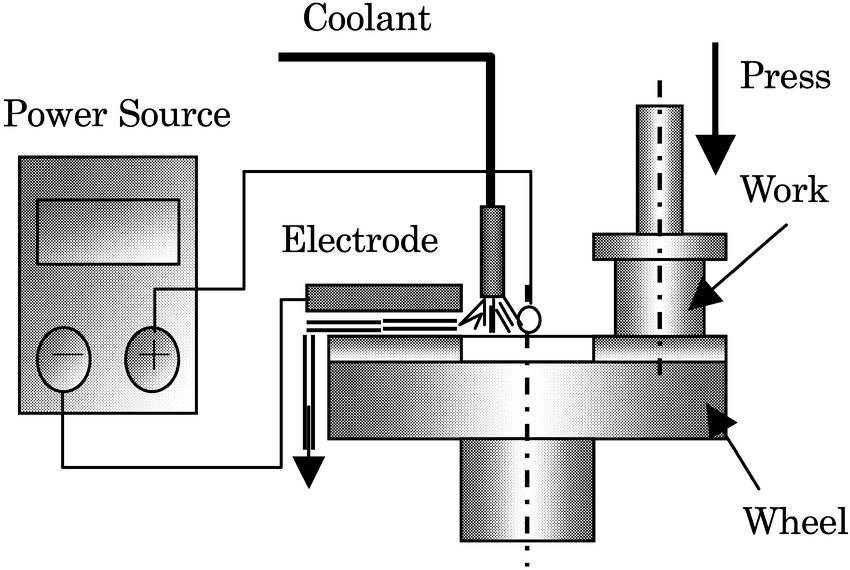
主要特点和优势
-
集成加工:ELID 研磨将多种传统加工工艺(包括切削、研磨和抛光)整合为一种单一的内聚方法。这种集成简化了制造流程,减少了对单独步骤的需求,并有可能降低生产成本。
-
电解解决方案:使用带有弱电解质的水溶液是 ELID 研磨的一大特点。这种溶液有助于精确去除材料,提高最终产品的精度和光滑度。电解过程还有助于保持磨具的锋利度,这对获得高质量的效果至关重要。
-
适用于精密陶瓷:鉴于精密陶瓷的高硬度和脆性,传统的加工方法往往难以达到所需的精度和表面质量。ELID 磨削能够应对这些挑战,特别适合加工精密陶瓷部件。
挑战和考虑因素
虽然 ELID 磨削具有多种优势,但也并非没有挑战。电解过程的复杂性和对电解质溶液精确控制的要求使其难以大规模实施。此外,高昂的初始设置成本和对专用设备的要求也可能成为广泛采用的障碍。
尽管存在这些挑战,ELID 研磨仍然是未来精密陶瓷领域一项前景广阔的技术。它能够以简化的工艺流程提供高质量的结果,使其成为不断寻求更高效、更有效的陶瓷加工方法的重要工具。
总之,ELID 研磨技术代表了精密陶瓷加工领域的一大进步,它将传统技术与创新技术相结合,解决了这些材料所带来的独特挑战。
激光加工
激光加工是一种非接触、无工具的方法,具有无与伦比的精度,尤其适用于脆性和硬质陶瓷材料。该技术利用聚焦激光束的能量,在微米和纳米尺度上对材料进行加工,非常适合传统加工方法难以完成的复杂任务。
不过,虽然激光加工在精度方面表现出色,但也并非没有挑战。确保一致的精度和保持较高的表面质量要求很高。激光加工的本质要求对激光功率、脉冲持续时间和光束聚焦等参数进行精细控制,而每一个参数都会对最终产品的质量产生重大影响。此外,加工过程的非接触性质意味着实时监控和纠正任何偏差都非常复杂。
尽管存在这些挑战,激光加工仍然是精密陶瓷制造的基石。激光加工能够实现复杂的几何形状和高尺寸精度,这使其在传统方法无法实现的应用领域变得不可或缺。随着研究和技术的不断进步,激光加工的精度和表面质量控制有望得到改善,从而进一步巩固其在未来精密陶瓷制造中的地位。
等离子辅助抛光
等离子体辅助抛光是陶瓷表面抛光的一种新方法,它利用等离子体的独特性能实现精确的材料去除。与传统的湿式抛光方法不同,这种技术在干燥的环境中运行,减少了与液体处理和处置相关的问题。等离子体辐照具有高能量和高活性的特点,可对材料表面进行选择性蚀刻,从而促进超光滑表面的实现。

然而,采用等离子辅助抛光技术并非没有障碍。主要挑战之一是与传统技术相比,材料去除率相对较低。这种限制要求更长的加工时间,这在高通量制造环境中可能是一个重大缺陷。此外,等离子体辅助抛光所需的专用设备通常过于昂贵,对广泛的工业应用构成了经济障碍。尽管存在这些挑战,但正在进行的研究旨在优化等离子参数并提高该工艺的效率,从而释放其在精密陶瓷领域的全部潜力。
复合抛光工艺
复合抛光工艺是精密陶瓷领域的一大进步,它提供了一种协同方法来提高表面质量和加工效率。这些工艺融合了各种技术,包括超声波振动辅助研磨和化学机械抛光 (CMP),以实现卓越的效果。
超声波振动辅助磨削在磨削过程中引入高频振动,可显著减少刀具磨损,提高材料去除率。这种方法对精密陶瓷等硬脆材料特别有效,因为传统的磨削方法效率低,而且容易产生表面缺陷。
另一方面,化学机械抛光(CMP)是半导体行业中一项成熟的技术,它能通过纳米级研磨颗粒与化学反应的相互作用产生超光滑表面。当与超声波研磨相结合时,CMP 可以进一步细化表面光洁度,达到对集成电路和光学元件等要求高精度的应用至关重要的光滑度。
这些方法的结合不仅能改善整体表面质量,还能提高加工效率。通过充分利用每种技术的优势,复合抛光工艺可以减少实现精密陶瓷高质量表面所需的时间和成本。这种综合方法尤其适用于既需要复杂成型又需要完美无瑕表面的复杂陶瓷元件。
总之,复合抛光工艺证明了精密陶瓷领域所采用的创新策略,展示了不同技术的结合如何在质量和效率方面带来卓越的成果。
结论与未来趋势
发展趋势
在利用高科技进步的近净成型技术的推动下,减少精密陶瓷部件制备过程中的机加工是一个重要趋势。这些技术旨在实现高精度形状和高尺寸精度,最大限度地减少对后处理加工的需求。
关键近净成形技术
| 技术 | 技术描述 | 优势 |
|---|---|---|
| 注塑成型 | 将聚合物注塑方法与陶瓷制备工艺相结合。 | 可生产密度均匀的小型复杂零件。 |
| 注胶成型 | 将传统的陶瓷成型与有机聚合方法相结合。 | 可为复杂形状生产接近净尺寸的高强度陶瓷坯料。 |
| 三维打印 | 利用计算机辅助设计和制造进行逐层堆积。 | 适用于高度复杂的陶瓷部件,无需模具。 |
这些近净成型技术不仅提高了陶瓷部件的精度,还简化了制造流程,降低了成本,提高了效率。这些方法最大限度地减少了大量机加工的需要,有助于缓解与陶瓷脆性和硬度有关的问题,而这些问题是传统机加工工艺中常见的难题。
由于集成电路制造、激光技术和生物医学应用等各种高科技行业对精密陶瓷元件的需求不断增加,预计这些先进技术的应用将继续增长。
研发需求

精密陶瓷的发展受到一些长期存在的挑战的阻碍,尤其是在大型复杂结构领域。这些挑战有多种表现形式,包括 成品率低 , 复杂的成型工艺 以及 生产成本上升 .要解决这些问题,就必须在研发(R&D)方面齐心协力,对现有方法进行创新和优化。
主要障碍之一是 产量低 主要障碍之一是大型复杂陶瓷结构的成品率低。传统的成型技术往往难以保持均匀性和结构完整性,导致大量材料浪费和成本增加。这就需要探索新的成型技术,例如 三维打印 等新型成型技术,这些技术可以更好地控制制造过程并减少浪费。
成型工艺的复杂性 成型工艺的复杂性 进一步加剧了这些挑战。陶瓷注塑成型(CIM)和注塑凝胶成型虽然对较小的部件有效,但在应用于较大、较复杂的设计时却面临着可扩展性问题。开发用途更广、可扩展性更强的成型技术对于克服这些局限性至关重要。例如,将 复合抛光工艺 例如,将复合材料抛光工艺与传统方法相结合,可以提高大规模生产的精度和效率。
此外 高成本 此外,与精密陶瓷制造相关的高成本也是广泛采用的一大障碍。这些成本主要来自于对专用设备、熟练劳动力和大量后处理的需求。为缓解这一问题,迫切需要具有成本效益的替代技术和工艺优化。诸如 ELID 研磨 和 等离子辅助抛光 等技术有望在降低成本的同时保持高质量标准。
总之,当前的研发工作必须把重点放在提高成品率、简化复杂的成型工艺和降低生产成本上。通过利用新兴技术和整合先进方法,精密陶瓷领域可以克服这些挑战,并为更广泛的工业应用铺平道路。
相关产品
- 水热合成反应釜聚四氟乙烯碳纸和碳布纳米生长定制PTFE特氟龙零件制造商
- 定制PTFE特氟龙零件制造商,用于PTFE球阀阀座
- 工程先进陶瓷用高温氧化铝(Al2O3)炉管
- 定制聚四氟乙烯(PTFE)特氟龙培养皿和蒸发皿制造商
- 非标绝缘子定制的定制PTFE特氟龙零件制造商

